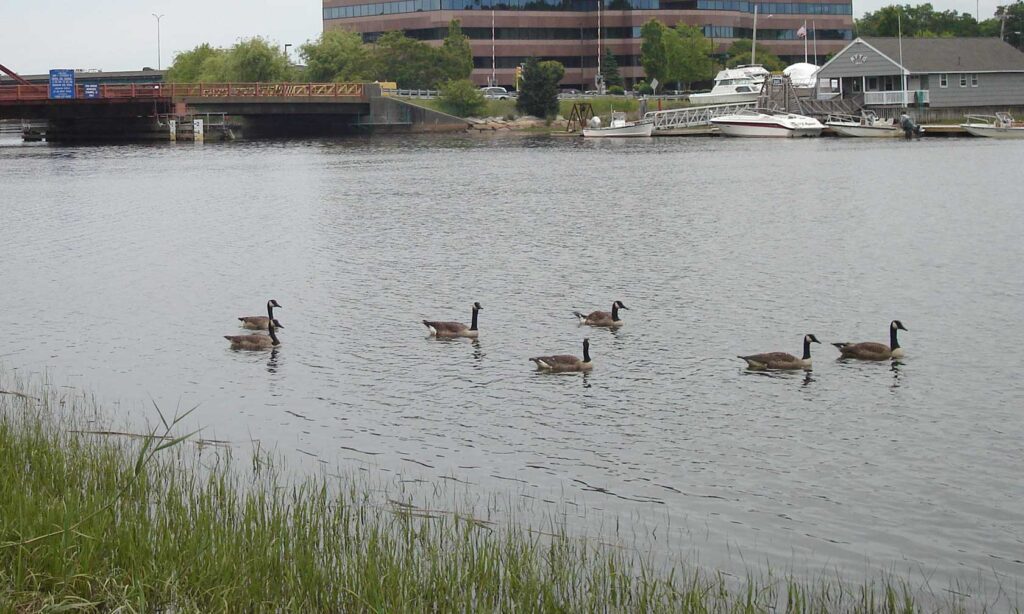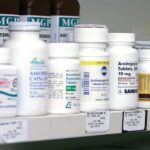EPA gives the Neponset River mixed grades
Nearby tributaries still deemed unsafe

An annual report from the Environmental Protection Agency this month provided mixed results on the water quality in the Neponset River, which borders Mattapan and part of Dorchester.
The EPA report card assigns a letter grade to reflect concentration of bacteria in the water to indicate how safe portions of the river’s watershed — everything from the main river to connected brooks and ponds — are for swimming and boating.
For the river system’s ponds and larger waterways, including the lower Neponset in Mattapan, the 2022 report card gave high grades suggesting, when it comes to bacteria, they are generally safe for recreational activities. But grades for smaller tributaries along the waterway dropped from 2021. This year, six brooks in the watershed received a D grade or lower. Last year, three did.
Sean McCanty, river restoration director at the Neponset River Watershed Association, said that drop was likely caused by extreme weather in 2020, 2021 and 2022. The grade is calculated from a three-year average.
“Water quality is affected by the things that go into it, but also the weather that’s happening around it,” McCanty said.
Increased rainfall pulls more contaminants into the water through runoff, while drought years decrease water levels, making the bacteria more concentrated in a sample.
For the Neponset River watershed, the sampling measures E. coli, which can indicate the presence of animal or human fecal matter in the water that is washed into the watershed as runoff during rainstorms or snowmelt. The levels are then compared with standards from the Massachusetts Department of Public Health to assign a grade.
For Jessie Dambreville, who lives near the river and serves as vice chair of the Edgewater Drive Neighborhood Association, the lower Neponset is an important resource for community members. That section of the watershed received a B-, a rating that means by bacteria levels alone it’s generally swimmable and always boatable.
“I talk about this river whenever I talk to someone from Mattapan … and so many people don’t know about it,” she said. “I’m constantly trying to get people out there and I’ll even take them, and they get super excited, and they bring their friends.”
Dambreville said she has wanted to try kayaking down the river, but for now doesn’t trust the water quality enough to do so.
While the report card provides important information to understand how humans interact with the river, it doesn’t provide a comprehensive picture of the water’s health overall. It doesn’t capture information about things like phosphorus or nitrogen that can enter the waterway through fertilizers or information about dissolved oxygen, important for fish health.
That simplification can be effective to help more people access the information, said Wendy Heiger-Bernays, a professor of environmental health at Boston University.
“What it says is, ‘Ick, there’s poop in that water. Do I really want to be swimming in that water?’” she said. “If the report card had some of these other characteristics, I think it’s not as effective at communicating the health of the river system.”
The report card also doesn’t quantify water health around chemicals like polychlorinated biphenyls (PCBs) carcinogenic compounds that ended up in the river due to former industrial activity in the area dating back to the 1930s.
Superfund site
The elevated pollution from PCBs, which bind to organic matter in the mud and sediment at the bottom of the river, led to the designation of the lower Neponset as a Superfund site in March 2022, opening the area to prioritized cleaning efforts and federal funding.
Those PCB levels don’t factor into the water quality report card because the environmental health world operates in silos, Heiger-Bernays said. Though released by the EPA, the report card uses metrics from the state Department of Public Health, while the Superfund status falls solely in the environmental realm.
“Superfund sort of straddles both, the Department of Public Health, but it’s really overseen by the (state) Department of Environmental Protection,” Heiger-Bernays said. “So, with regard to the question of whether that report card considers the Superfund status of the Neponset, (the) answer’s no.”
Due to the impact of the PCBs, consumption of fish from the lower Neponset, as well as swimming, which could entail contact with the contaminated soil, is not advised.
While the PCBs don’t factor into the report card, McCanty said the two aren’t entirely unrelated. The lower Neponset’s B- grade rates it as safe for paddle sports like kayaking and canoeing — activities that don’t impact the PCB-contaminated sediment.
“Because it’s separated from the sediment, canoeing on the lower Neponset is still a permitted activity, even while the Superfund process is going on,” McCanty said.
Following the designation in 2022, McCanty said, the EPA has begun doing survey work and early remediation at Lewis Chemical Site and Riverside Square, both in Hyde Park. It is also leading a community engagement process to shape plans for the work that could affect the area for the next 15 years.
Dambreville said she and other communities saw the Superfund designation as an important step toward improving the river.
“We were very excited that it was made into a Superfund site and that it will get cleaned up,” she said. “[We hope] more activities in the future, lots of activities, can be done on the river in the future.
Understanding river health can help people better care for the natural resource, McCanty said. When it comes to all health metrics for the river, he said individual and community actions matter.
“People should be considering their own impact on the waterways that they themselves do, and also the ways in which they can advocate for cleaner water in their local communities, cities and towns.”
While efforts take place to improve the water quality, Dambreville encourages residents, especially those nearby in historically disenfranchised neighborhoods like Mattapan and Dorchester, to make the most of the resource.
“Even though it’s not clean enough to swim in and be in right now, still, just to be near it [is good],” Dambreville said. “It’s just an amazing resource to have literally in your backyard.”






